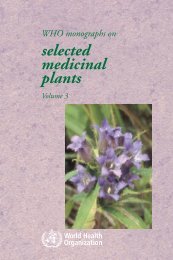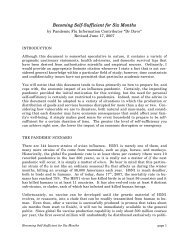You also want an ePaper? Increase the reach of your titles
YUMPU automatically turns print PDFs into web optimized ePapers that Google loves.
Purple or Purple-Brown Spore Print<br />
GENUS Agaricus<br />
The edible qualities of members of this genus were known to<br />
the ancients, and it has the honor of being included in what was<br />
probably the first cookbook in the English language, written<br />
about 1390 by the chief cook of Richard II. One of the species<br />
described below, Agaricus campestris, is the principal cultivated<br />
mushroom of commerce. No one knows just when people<br />
learned that these mushrooms could be grown artificially, but the<br />
first record was made shortly after 1600, when the art was confined<br />
to a comparatively small area near Paris. Before World<br />
War I more than twenty miles of mushroom caves near Paris,<br />
mostly in abandoned stone mines, supplied much of Europe with<br />
fresh and canned mushrooms.<br />
The "agarick" mentioned in some of the old herbals was not<br />
Agaricus but a woody bracket growing on coniferous trees and<br />
was erroneously supposed to be a specific cure for many of the<br />
ills to which our failing flesh is heir.<br />
The name Psalliota is a synonym of Agaricus and is preferred<br />
by some botanists. It has the virtue of being more descriptive,<br />
since it is taken from the Greek word psallion, meaning a ring<br />
or collar, and refers to the ring surrounding the upper part of<br />
the stem. Agaricus is derived from a Greek word meaning mushroom<br />
and probably was merely one of several common terms<br />
used for fleshy fungi in general.<br />
The genus is characterized by (i) the deep purple-brown<br />
spores, (2) the fleshy stem that can be separated easily from the<br />
cap, (3) the definite ring on the stem seen when the cap expands<br />
(this ring may wither and disappear later), and (4) gills free<br />
from the stem.<br />
The young gills of most species are white before the cap<br />
opens, become pink as the spores begin to mature, and finally<br />
73
















